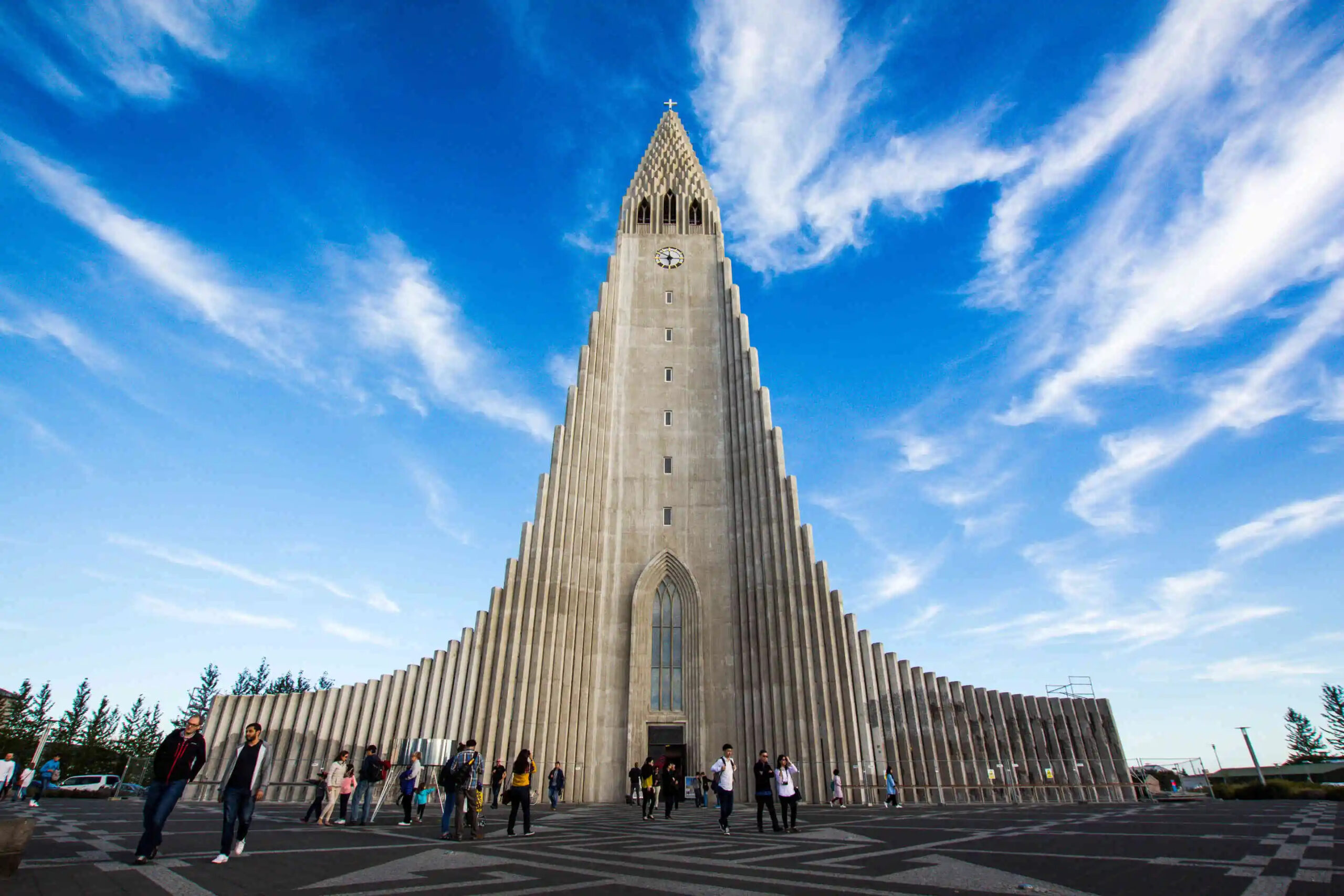
Hallgrímskirkja is a Lutheran church located in the capital city of Iceland, Reykjavík. The church is a prominent landmark and a major tourist attraction in the city, attracting visitors from all over the world. It is one of the most famous buildings in Iceland and a symbol of the country’s culture and history.
The church is named after Hallgrímur Pétursson, a famous Icelandic poet and clergyman who lived in the 17th century. Hallgrímur is best known for his hymns, including “Passíusálmar” (Passion Hymns), which are still sung in Icelandic churches today. Naming the church after Hallgrímur was a way of honoring his contribution to Icelandic culture and spirituality.
The construction of Hallgrímskirkja began in 1945, but it took over 40 years to complete the building. The main reason for the long construction time was the lack of funds and resources in Iceland after World War II. The church’s architect, Guðjón Samúelsson, died before the church was completed, so he did not live to see the finished building.
Guðjón Samúelsson, the architect of Hallgrímskirkja, was one of Iceland’s most famous architects. He was known for his use of concrete and his unique, modernist style. In addition to designing Hallgrímskirkja, he also designed several other buildings in Reykjavík, including the National Theatre of Iceland and the Landakotskirkja church. Samúelsson’s legacy has had a significant impact on Icelandic architecture and design.
Hallgrímskirkja is the tallest building in Iceland, standing at 73 meters (239 feet) tall. The tower can be seen from almost anywhere in Reykjavík, making it a prominent feature of the city’s skyline. The height of the tower was intentional, as Samúelsson wanted it to be a beacon for ships entering the harbor.
The design of Hallgrímskirkja is said to be inspired by the basalt columns found in Iceland’s landscape. The church’s exterior is made of concrete, which was then coated in Icelandic marble to give it a more natural appearance. The columns on the sides of the church are meant to resemble the basalt columns found at Reynisfjara Beach in southern Iceland.
The pipe organ in Hallgrímskirkja is one of the largest in Europe, with 5275 pipes and 72 stops. The organ was built by Johannes Klais Orgelbau, a German organ builder, and was installed in the church in 1992. The organ is known for its powerful and rich sound, and it is often used for concerts and performances.
The church’s bell is the largest in Iceland, weighing 25 tons. The bell was cast in Germany and transported to Iceland by ship. It was installed in the church in 1985 and is rung every day at 12 pm. The sound of the bell can be heard throughout Reykjavík and is a familiar sound to many locals.
The clock face on Hallgrímskirkja’s tower is 8.7 meters (28.5 feet) in diameter, making it one of the largest in the world. The clock face was also designed by Samúelsson and is a prominent feature of the tower. The clock was built by the Swiss company Uetliberg.
In front of Hallgrímskirkja stands a statue of Leifur Eiríksson, the Icelandic explorer who is said to have discovered America. The statue was a gift from the United States in 1930 and was unveiled by President Franklin D. Roosevelt. The statue is a symbol of the strong ties between Iceland and the United States.
The tower of Hallgrímskirkja offers panoramic views of Reykjavík and its surroundings. Visitors can take an elevator to the top of the tower and enjoy the view from the observation deck. The view is particularly stunning at sunset when the city is bathed in a warm orange light.
The interior of Hallgrímskirkja features a large, ornate altar made of teak wood. The altar was designed by Samúelsson and features a relief sculpture of Jesus on the cross. The church’s stained glass windows were designed by the Icelandic artist Gerður Helgadóttir and are a beautiful example of modern Icelandic art.
Hallgrímskirkja has hosted many concerts and events over the years, including performances by the Icelandic Symphony Orchestra and the Reykjavík Chamber Orchestra. The acoustics of the church are known to be excellent, making it a popular venue for classical music performances.
The exterior of Hallgrímskirkja has been featured in several films and television shows, including the popular HBO series Game of Thrones. The church’s striking design and unique location make it a popular filming location for productions set in Iceland.
Hallgrímskirkja is a popular tourist attraction in Reykjavík, with over 1 million visitors each year. Visitors can attend worship services or take a tour of the church. The church also hosts a Christmas concert series every year, which is a popular event for locals and visitors alike.
In 2008, a time capsule was buried beneath the cornerstone of Hallgrímskirkja. The capsule contains items such as photographs, coins, and newspapers from the year the church was completed. The capsule is scheduled to be opened in the year 2124, on the 300th anniversary of Hallgrímur Pétursson’s death.
The construction of Hallgrímskirkja was controversial at the time, with many Icelanders criticizing the church’s modernist design. However, over time, the church has become a beloved symbol of Icelandic culture and history.
The area around Hallgrímskirkja is a popular gathering place for locals and tourists. There are several cafes and restaurants in the area, as well as a park where people can relax and enjoy the view of the church.
Hallgrímskirkja is a popular spot for photographers, especially at night when the church is illuminated. The church’s unique design and prominent location make it a striking subject for photography.
Hallgrímskirkja is located in the heart of Reykjavík’s city center, making it easily accessible to visitors. There are several hotels and guesthouses in the area, as well as many other attractions, such as the Icelandic Phallological Museum and the Reykjavík Art Museum.
The construction of Hallgrímskirkja was partly funded by the Icelandic government, but much of the money came from private donations. The church remains an important symbol of Icelandic identity and spirituality.
In addition to being a place of worship, Hallgrímskirkja is also a cultural center. The church hosts art exhibitions, lectures, and other events throughout the year.
Hallgrímskirkja is an important part of Iceland’s history and culture. It is a symbol of the country’s independence and a tribute to the creativity and ingenuity of its people. The church’s unique design and prominent location ensure that it will continue to be a beloved landmark for generations to come.









